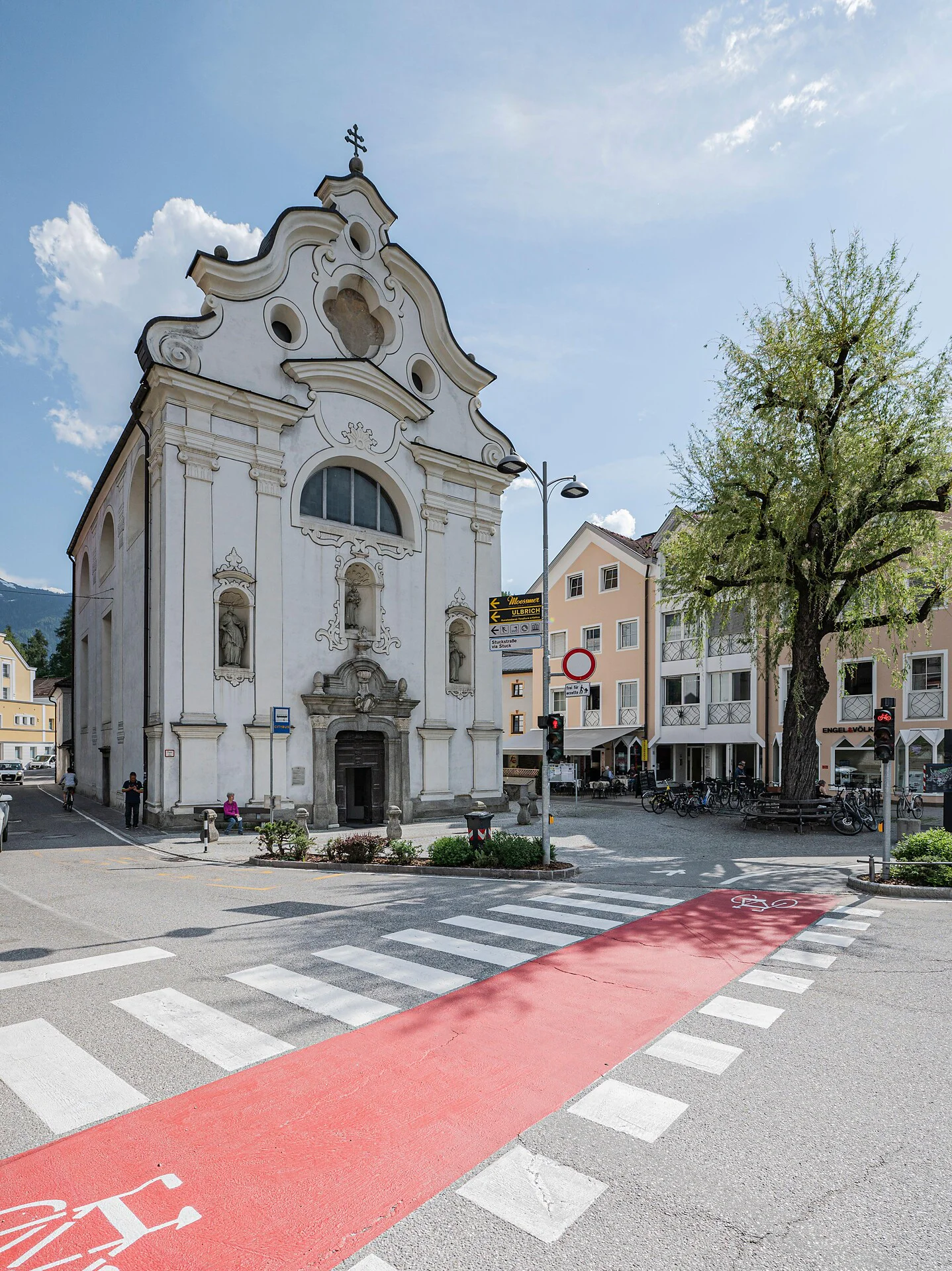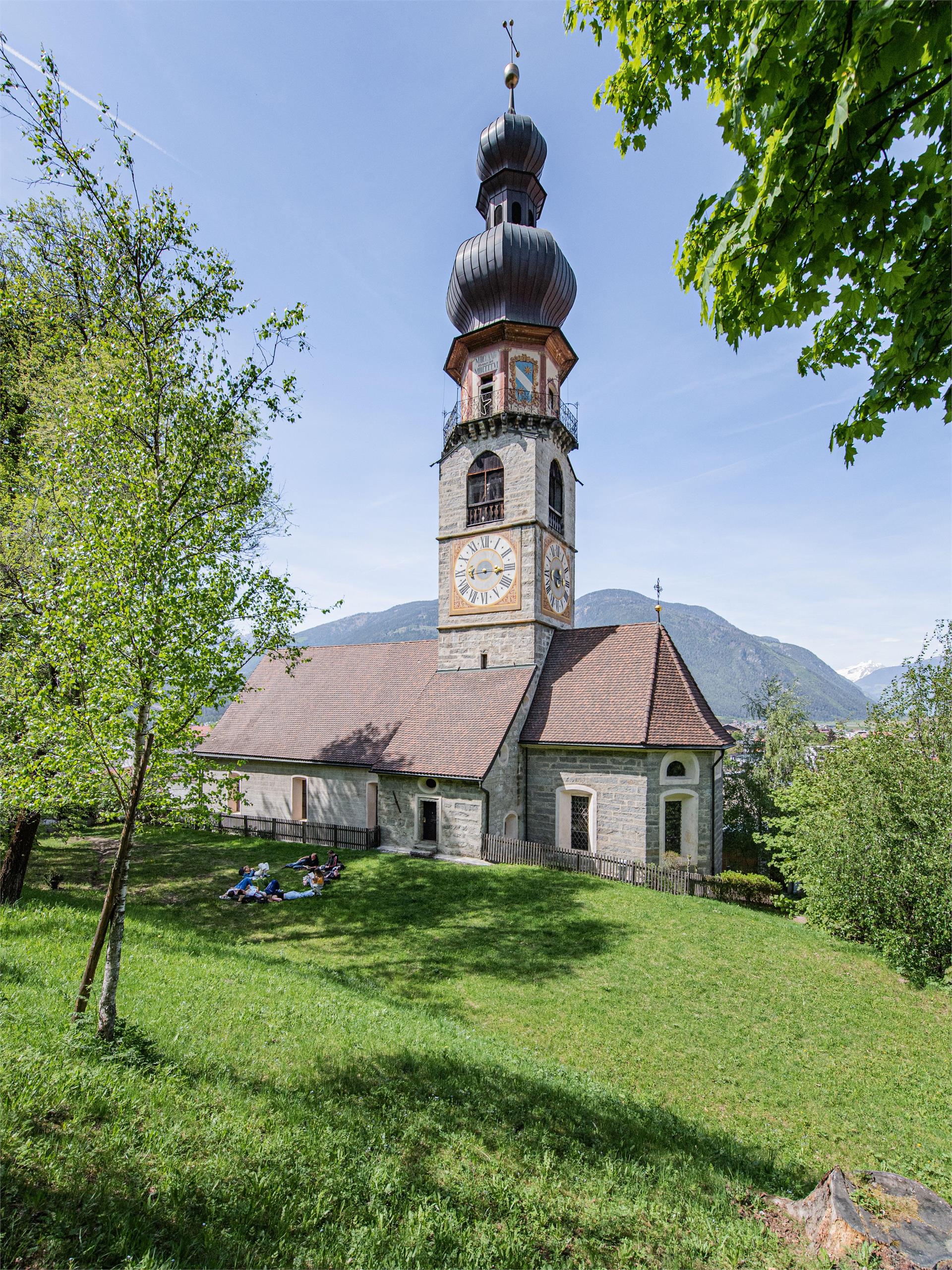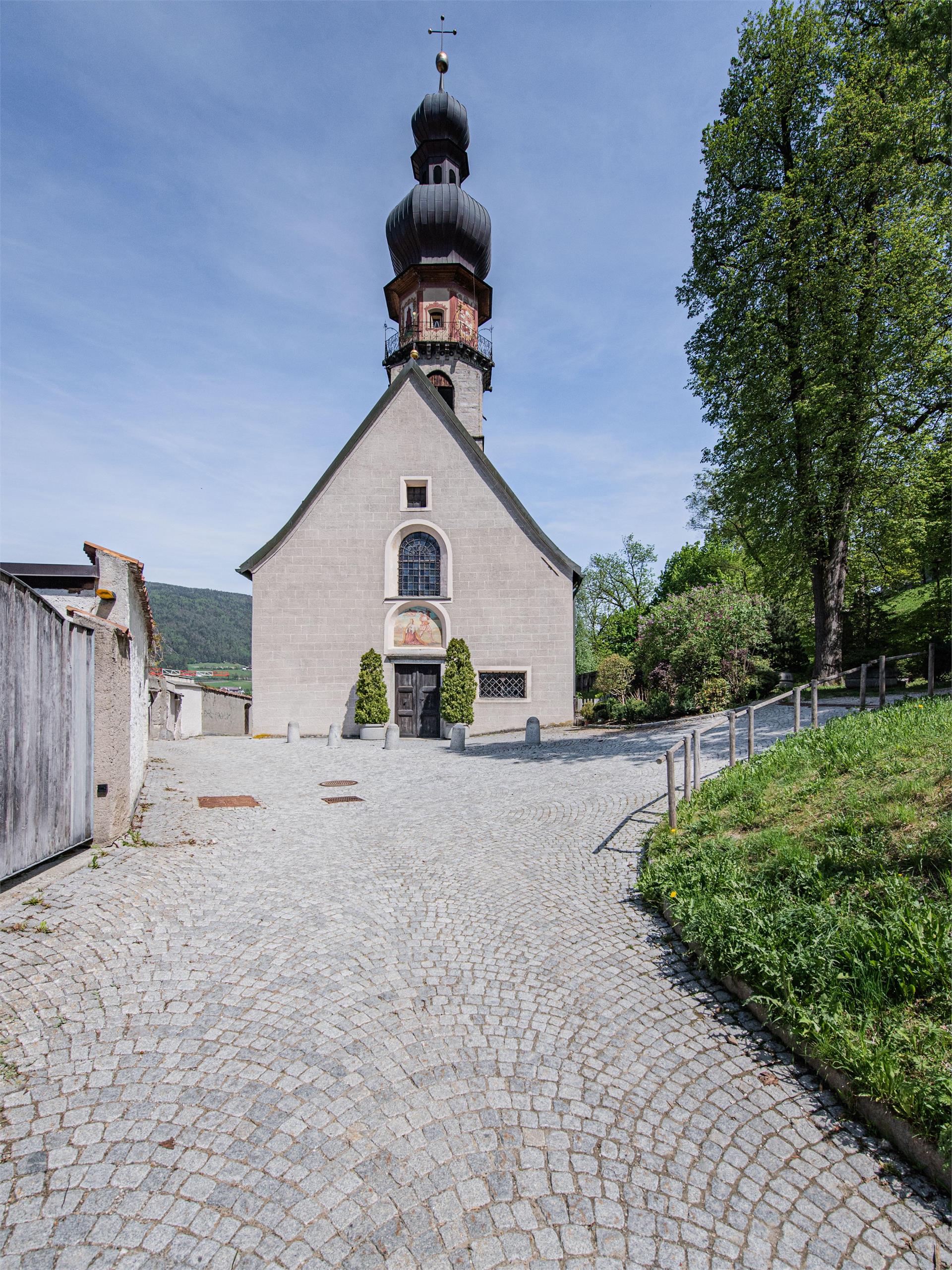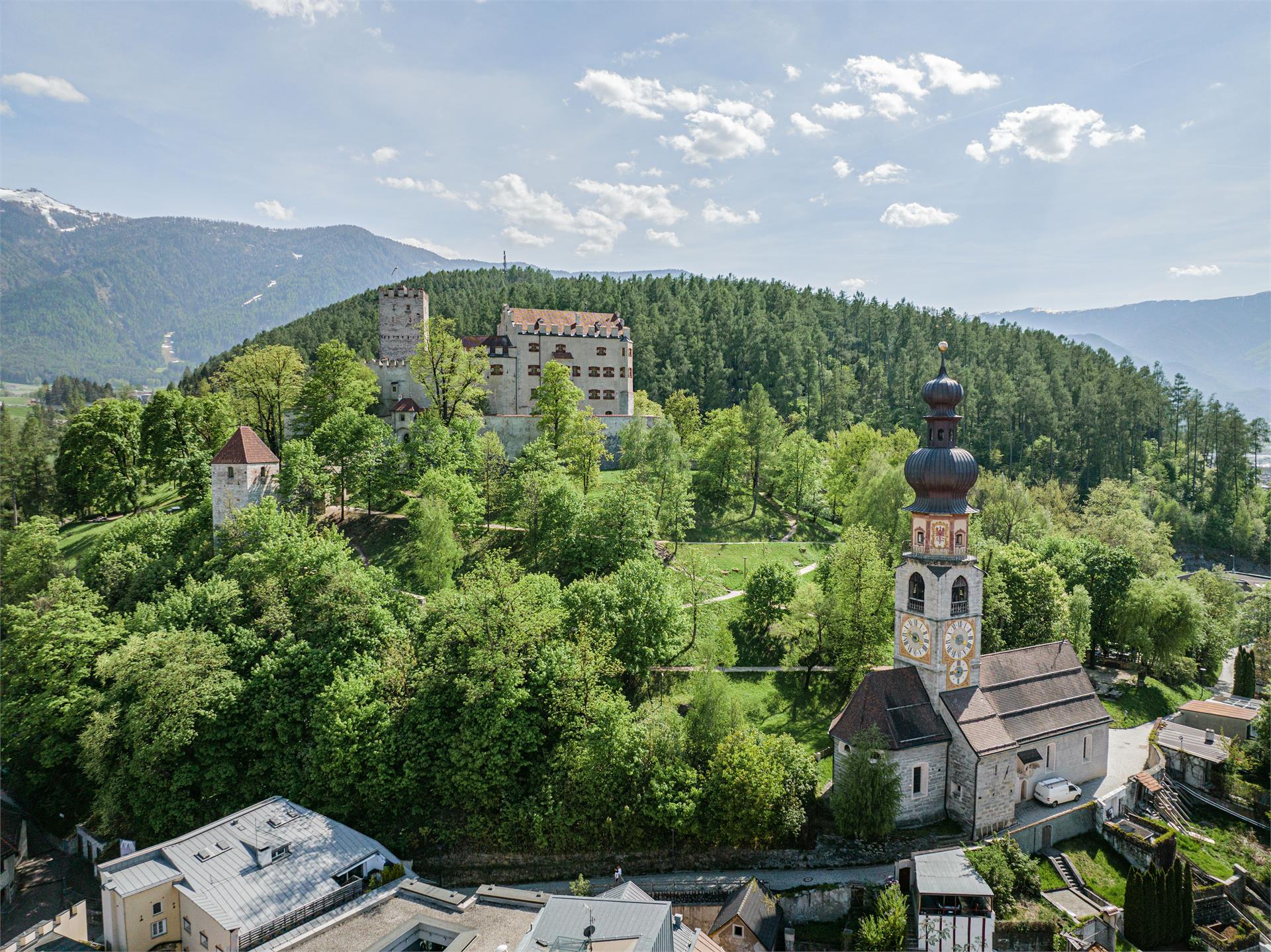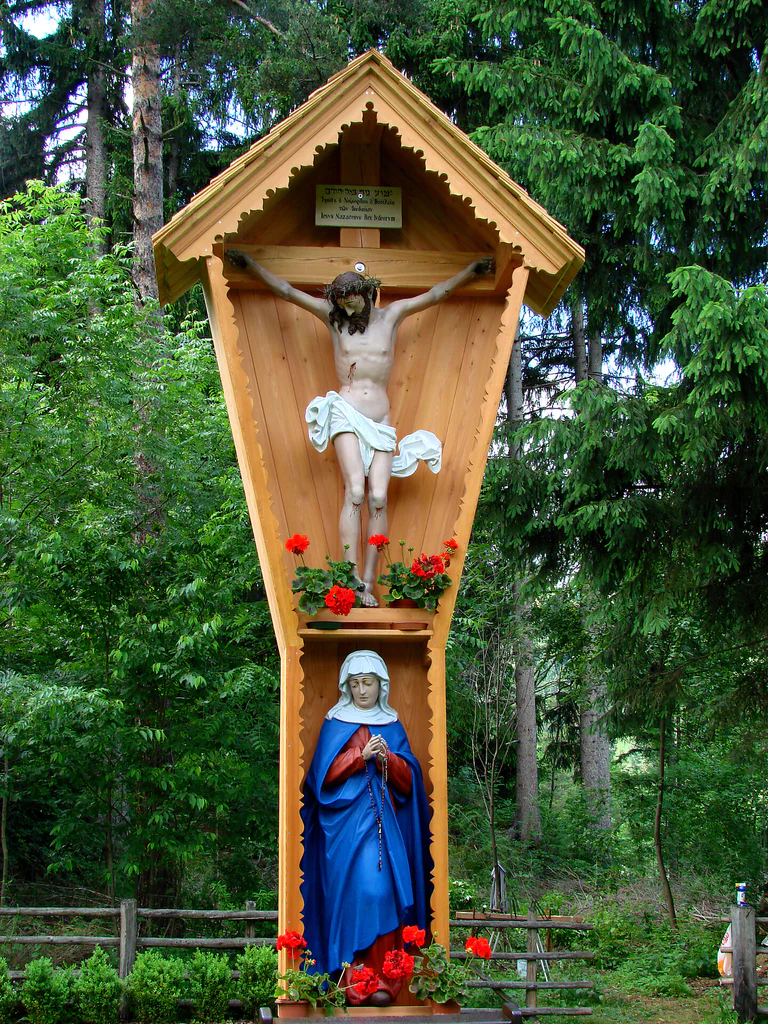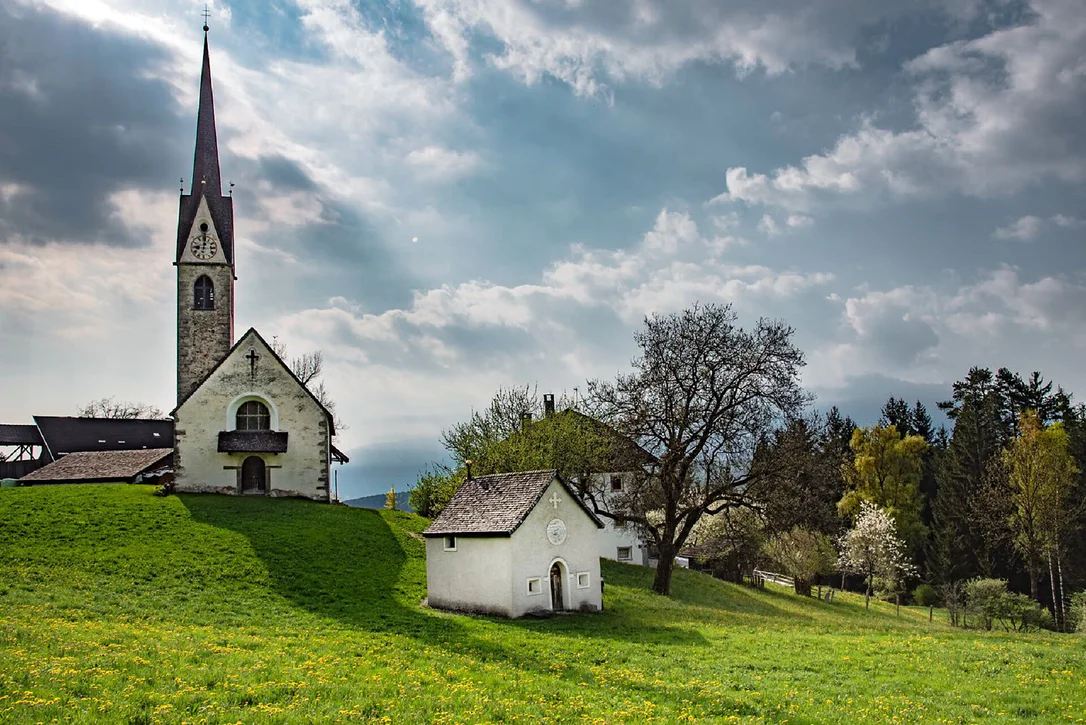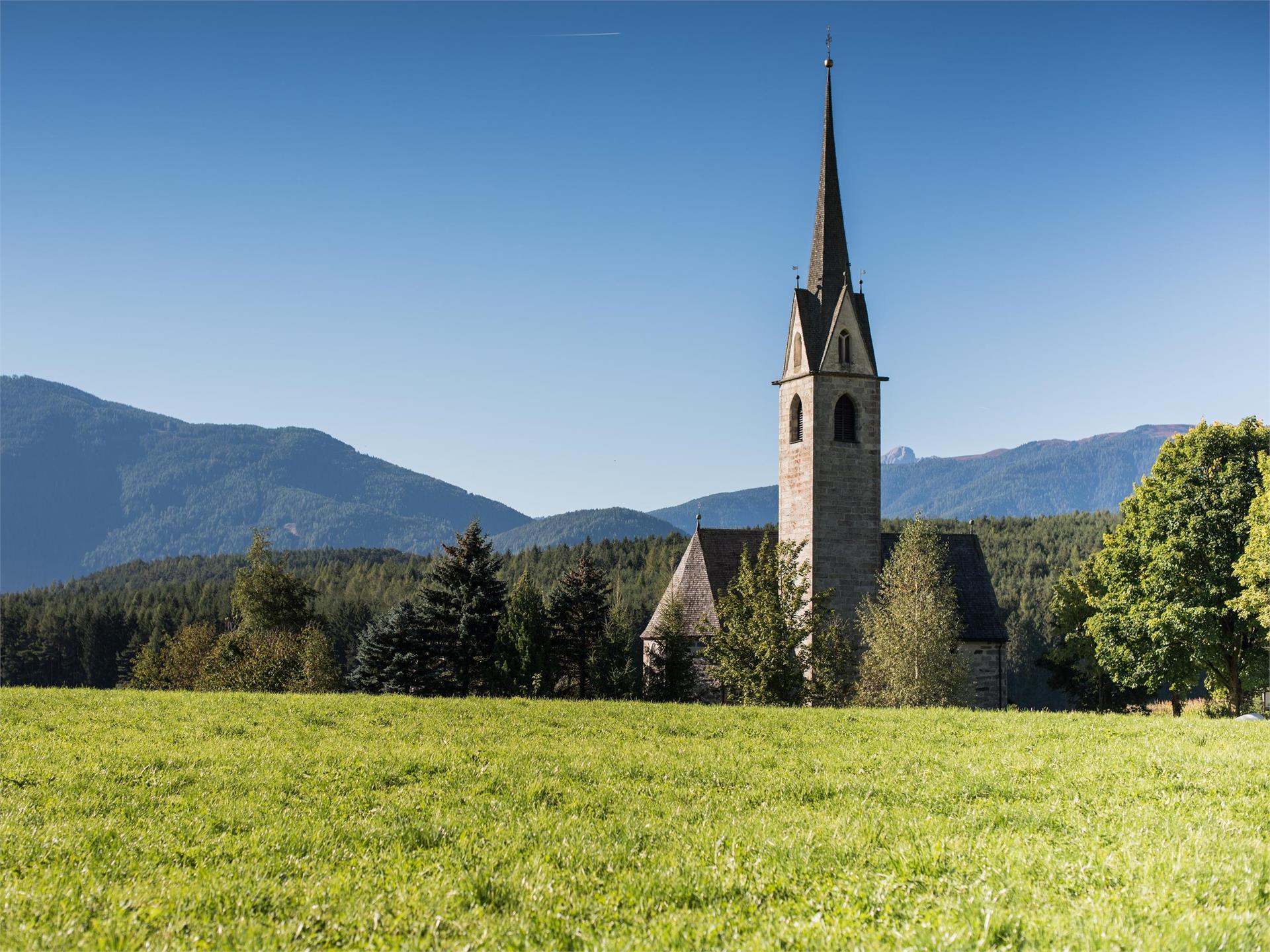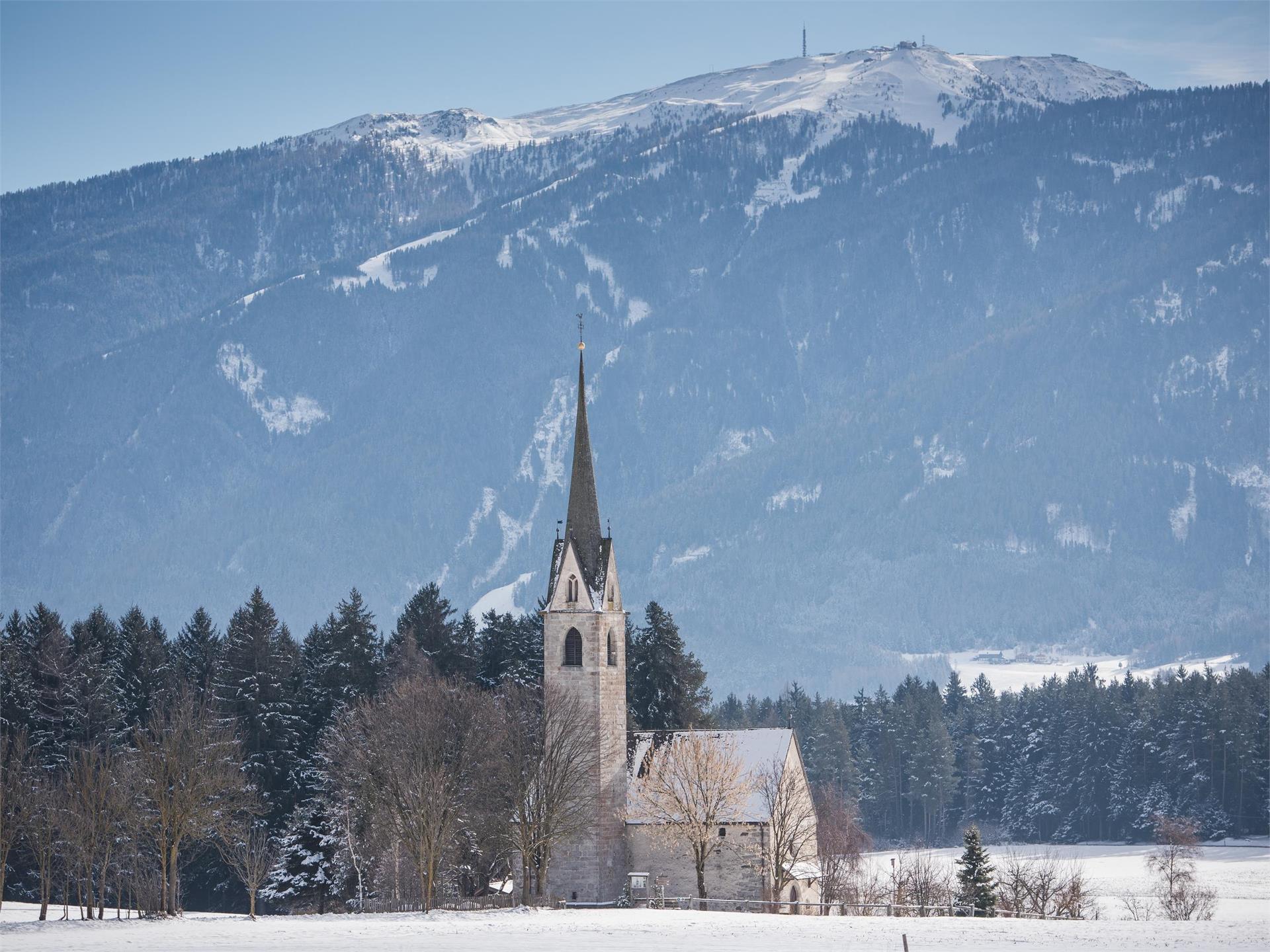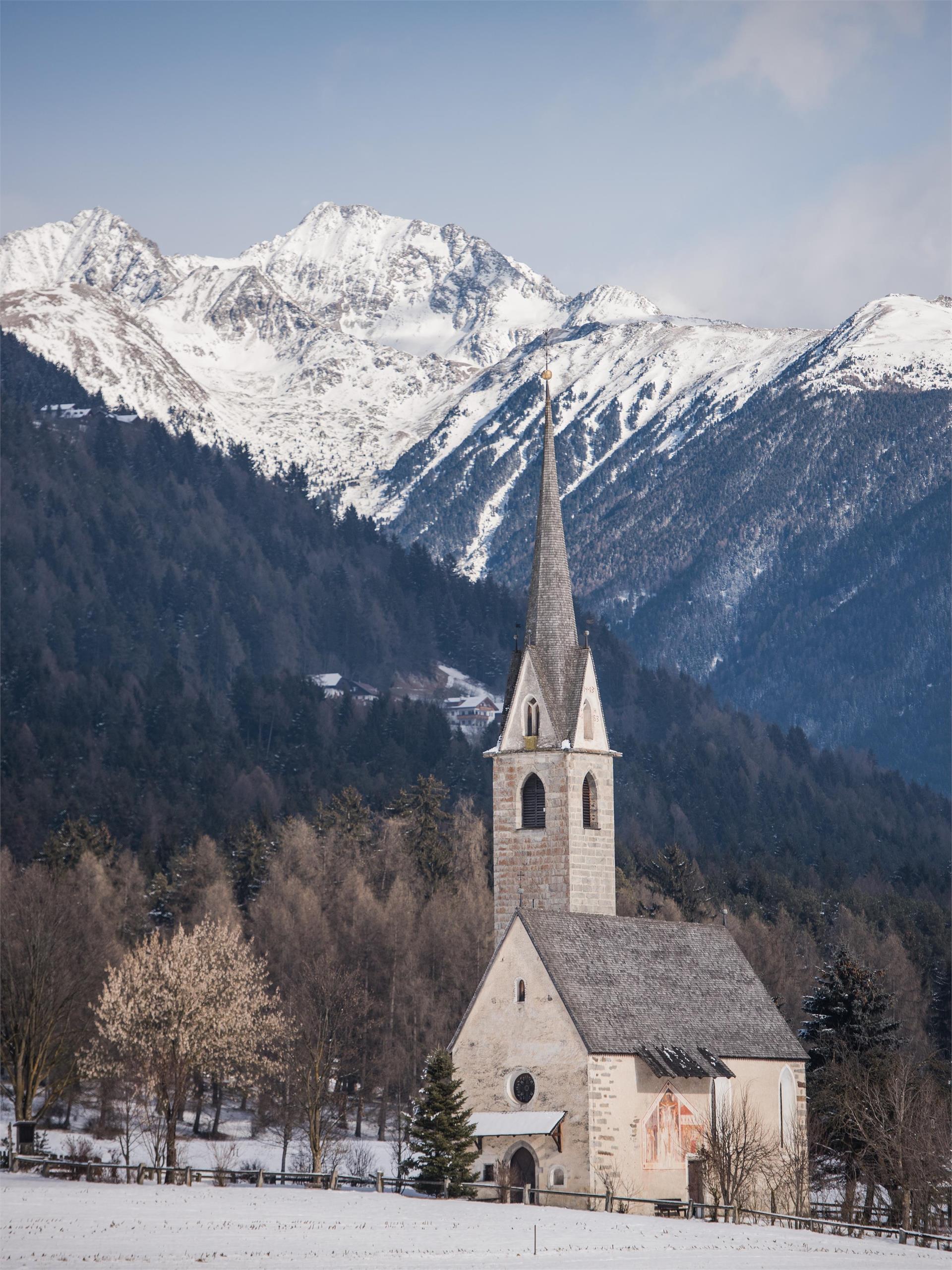Parish Church with a valuable crucifix by Michael Pacher and an organ, built in 1983 by Mathis, the biggest in South Tyrol.
Holy Mass: Mondays and Fridays at 8:00 a.m.,
Evening Holy Mass: 6:00 p.m.
Sundays and holidays at 9:00 a.m., 11:00 a.m. (in Italian) and at 6:00 p.m.
All Holy Masses are held in German, except where indicated differently.




